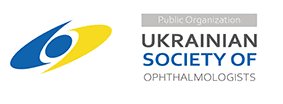Relationships between target intraocular pressure and central corneal thickness in stabilized and non-stabilized glaucoma patients
DOI:
https://doi.org/10.31288/oftalmolzh202121015Keywords:
primary open-angle glaucoma, target intraocular pressure, corneal thicknessAbstract
Background: Until now, no direct relationship has been established between the target pressure and particular corneal thickness for measurements with different types of tonometers.
Purpose: To establish the dependence of target intraocular pressure (IOP) on corneal thickness for Maklakoff applanation tonometry, Pascal dynamic contour tonometry (DCT) and ICare rebound tonometry.
Material and Methods: Fifty-two patients (52 eyes; mean age, 71.2 ± 7.7 years) with preoperative cataract underwent an eye examination. These included 13 eyes with cataract associated with stabilized primary open-angle glaucoma (POAG), 20 eyes with cataract associated with non-stabilized POAG, and 19 control eyes with cataract and no history of or present glaucoma. Patients underwent a comprehensive eye examination, Maklakoff applanation tonometry, Pascal dynamic contour tonometry (DCT) and ICare rebound tonometry with IC 200.
Results: Group 1 (corneal thickness, 460-489 μm; mean corneal thickness, 479 ± 7.2 μm) patients with stabilized glaucoma had the highest mean values for IOP obtained by any of the three methods at which no glaucoma progression was observed during the most recent 6 months. In group 1 patients with stabilized glaucoma, mean IOP was 16.9 ± 1.2 mmHg for Pascal DCT, 16.2 ± 1.4 mmHg for ICare tonometry, and 20 ± 0.8 mmHg for Maklakoff applanation tonometry. There was a significant difference (р < 0.05) in Maklakoff applanation tonometry IOP, but not in Pascal DCT or ICare tonometry, between group 1 patients with non-stabilized glaucoma (23.8 ± 2.0 mmHg) and those with no glaucoma (16.5 ± 0.7 mmHg). The highest IOP readings were observed in patients of group 5 (corneal thickness, 580–600 μm; mean corneal thickness, 593 ± 4.3 μm) with non-stabilized glaucoma: mean IOP was 28.1 ± 15.0 mmHg for Pascal DCT, 33.2 ± 21.1 mmHg for ICare tonometry, and 25.3 ± 7.5 mmHg for Maklakoff applanation tonometry.
Conclusion: Maklakoff tonometry measurements are more sensitive than Pascal DCT or ICare rebound tonometry measurements in patients with thinner corneas. Sensitivity of the tonometry methods under study decreased with increases in corneal thickness and IOP. This should be taking in account while setting a target IOP for glaucoma patients. Among the groups with different corneal thicknesses (groups 1 to 5), group 2 (corneal thickness, 490 – 519 μm) had the highest percentage of patients with non-stabilized glaucoma (75%), followed by group 1 (corneal thickness, 460 – 489 μm; 45.4%).
References
1.Weinreb RN, Liebmann J, World Glaucoma Association. Medical Treatment of Glaucoma: The 7th Consensus Report of the World Glaucoma Association. Kugler Publications: Amsterdam; 2010.
2.Boriskina LN. [Campimetric method for measuring the individually tolerated intraocular pressure in primary open-angle glaucoma]. In: [Aktualnyie voprosy eksperimentalnoi i klinicheskoi meditsiny]. Volgograd: VGMI; 1981. p.146-7. Russian.
3.Fokin VP, Balalin SV. [Determining target intraocular pressure in patients with primary open-angle glaucoma]. Glaucoma. 2007;4:16-20. Russian.
4.Fokin VP, Balalin SV. [Study of optic nerve intolerance to compressive ocular hypertension by computer-aided suprathreshold static perimetry in patients with glaucoma, pseudoglaucoma and ocular hypertension]. Glaucoma. 2008;2:3-8. Russian.
5.Fokin VP, Balalin SV. [Modern organizational and medical technologies in the diagnosis and treatment of primary glaucoma]. Oftal'mokhirurgiia. 2011;(2):43-9. Russian.
6.The Advanced Glaucoma Intervention Study (AGIS): 7.The relationship between control of intraocular pressure and visual field deterioration. The AGIS Investigators. Am J Ophtalmol. 2000;4:429-40.https://doi.org/10.1016/S0002-9394(00)00538-9
7.[National guidelines for glaucoma for medical practitioners]. Egorov EA, Astakhov YS, Yerichev VP, editors. 3rd ed. Moscow: GEOTAR-Media; 2015. Russian.
8.Volkov VV. [Open-angle glaucoma]. Moscow: Meditsinskoie informatsionnoie agenstvo; 2008. Russian.
9.Nesterov AP. [Glaucoma]. Moscow: Meditsinskoie informatsionnoie agenstvo; 2008. Russian.
10.Egorov EA, Vasina MV. [Influence of corneal thickness on intraocular pressure among different groups of patients]. Klinicheskaia oftalmologiia. 2006;7(1):16-9. Russian.
11.Egorov EA, Vasina MV. [Intraocular pressure and corneal thickness]. Glaucoma. 2006;(2):34-6. Russian.
12.Iomdina EN, Kiseleva OA, Moiseeva IN, Shtein AA, Bessmertnyi AM, etc. [Biomechanical criteria for estimating the risk of primary open-angle glaucoma progression]. Klinicheskaia meditsina. 2016;8(4):59-63. Russian.https://doi.org/10.17691/stm2016.8.4.08
13.Iomdina EN, Bauer SM, Kotlyar KE. Neroev VV, editor. [Biomechanics of the eye: theoretical aspects and clinical applications]. Moscow: Real Time; 2015. Russian.
14.Kohlhaas M, Boehm AG, Spoerl E, Pursten A, Grein HJ, Pillunat LE. Effect of central corneal thickness, corneal curvature, and axial length on applanation tonometry. Arch Ophthalmol. 2006; 124(4): 471-6.https://doi.org/10.1001/archopht.124.4.471
15.Alekseev VV. [Assessing the influence of corneal parameters on tonometry results in the healthy population]. Klinicheskaia oftalmologiia. 2008;(4):128. Russian.
16.Doyle A, Lachkar Y. Comparison of dynamic contour tonometry with Goldman applanation tonometry over a wide range of central corneal thickness. J Glaucoma. 2005 Aug;14(4):288-92.https://doi.org/10.1097/01.ijg.0000169393.40298.05
17.Kaufmann C, Bachmann LM, Thiel MA. Comparison of dynamic contour tonometry with Goldmann applanation tonometry. Invest Ophthalmol Vis Sci. 2004 Sep;45(9):3118-21.https://doi.org/10.1167/iovs.04-0018
18.Kostova S, Angelov B, Petkova N. [A comparative study of intraocular pressure in primary open angle glaucoma, measured by PASCAL dynamic contour tonometer, GOLDMANN applanation tonometry and Maklakov applanation tonometry]. Klinicheskaya oftal'mologiya. 2009;10(4):123--125.
19.Pakrou N, Gray T, Mills R, Landers J, Craig J. Clinical comparison of the Icare tonometer and Goldmann applanation tonometry. J Glaucoma. Jan-Feb 2008;17(1):43-7.https://doi.org/10.1097/IJG.0b013e318133fb32
20.Fernandes P, Diaz-Rey JA, Gonzalez-Meijome JM, et al. Comparison of ICare rebound tonometer with Goldmann applanation tonometer in a normal population. Ophthal Physiol Opt. 2005;25:436-40.https://doi.org/10.1111/j.1475-1313.2005.00327.x
21.Volkova NV, Yurieva TN, Shvets LV, Mikhalevich IM. [Correlation and correction factors for different types of tonometry. Report 1]. Natsionalnyi zhurnal glaukoma. 2015;14(3):11-8. Russian.
22.Vasina MV. [Influence of central corneal thickness on intraocular pressure and the course of glaucoma]. Thesis for the Degree of Cand Sc (Med). Moscow: Russian State Medical University; 2010. Russian.
23.Alekseev VV, Litvin IB. [Influence of corneal thickness on intraocular pressure and prognosis of glaucoma]. Klinicheskaia oftalmologiia. 2008; 9(4):23-4. Russian.
Downloads
Published
How to Cite
Issue
Section
License
Copyright (c) 2025 С. К. Дмитрієв, О. А. Перетягін, Ю. М. Лазарь, Ю. О. Татаріна

This work is licensed under a Creative Commons Attribution 4.0 International License.
This work is licensed under a Creative Commons Attribution 4.0 International (CC BY 4.0) that allows users to read, download, copy, distribute, print, search, or link to the full texts of the articles, or use them for any other lawful purpose, without asking prior permission from the publisher or the author as long as they cite the source.
COPYRIGHT NOTICE
Authors who publish in this journal agree to the following terms:
- Authors hold copyright immediately after publication of their works and retain publishing rights without any restrictions.
- The copyright commencement date complies the publication date of the issue, where the article is included in.
DEPOSIT POLICY
- Authors are permitted and encouraged to post their work online (e.g., in institutional repositories or on their website) during the editorial process, as it can lead to productive exchanges, as well as earlier and greater citation of published work.
- Authors are able to enter into separate, additional contractual arrangements for the non-exclusive distribution of the journal's published version of the work with an acknowledgement of its initial publication in this journal.
- Post-print (post-refereeing manuscript version) and publisher's PDF-version self-archiving is allowed.
- Archiving the pre-print (pre-refereeing manuscript version) not allowed.












